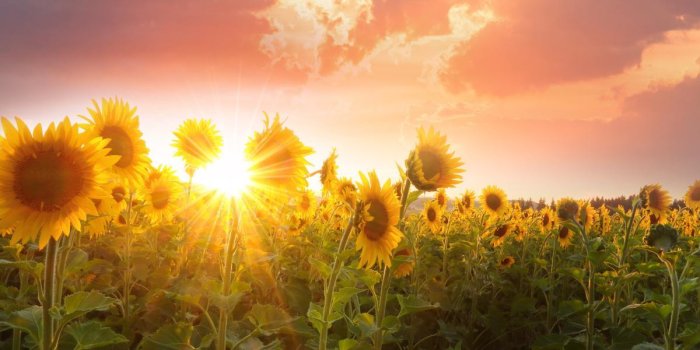K
Kathleen Martin
Guest
As an exploit, it may not rank up there with UAVs saving lives on first responder missions or locating people desperately lost in the inhospitable wilds, but an Australian farmer is celebrating what he believes to be the world’s first sunflower crop to be entirely planted by a drone.
Queensland farmer and agricultural UAV service provider Roger Woods performed the reputedly unprecedented aerial feat in a series of fields near the city of Toowoomba, about 125 km west of Brisbane. As excited as he is at pulling off what he believes is the first 100% drone-executed sunflower plantation, Woods is even more chuffed at what the accomplishment will mean in facilitating the work and lives of farmers around the globe.
“To our knowledge, it’s the first sunflower crop in the world entirely planted by a big agricultural drone that we use commercially,” Woods told ABC News. “It spreads the seeds, and then that drone subsequently fertilized and kept the crop healthy. The only thing it doesn’t do is harvest it.”
Woods says he’s used the craft to spread seeds for growing crops like lucerne, wheat, and barley, but had been warned by peers that UAVs aren’t suitable for sunflower planting. Seeds need to be disseminated far enough apart to favor germination, they advised, while sprouted stalks require sufficient and regular spacing to fully take root and thrive.
But after 12 test runs to fine-tune his system, Woods carried out his drone flights in September, spreading 45,000 seeds per every 2.5-acre sewn. His objective was to produce 30,000 sunflower plants on each of those component zones.
“We probably didn’t quite get that in a lot of areas, so we can probably drop that rate a little bit in the future,” he said, proud nevertheless of the thick, tall plants that have arisen from the ground. “I’ve also got some ideas on heights, spin speed, patterning, and just to tidy up what we’ve learned across the 12 experiments here.”
In addition to adding a reputedly difficult crop to the list of those drones now help produce every year, Woods says his sunflower experiment has also again demonstrated the environmental and financial contributions UAVs can make to farming. The craft are more precise and less wasteful than other alternatives in agriculture, and their lack of terrestrial footprint is valuable to crops and ground that can be disturbed, or even damaged, by land vehicles.
Continue reading: https://dronedj.com/2021/12/28/aussie-farmer-plants-possibly-first-ever-sunflower-crop-using-a-drone/
Queensland farmer and agricultural UAV service provider Roger Woods performed the reputedly unprecedented aerial feat in a series of fields near the city of Toowoomba, about 125 km west of Brisbane. As excited as he is at pulling off what he believes is the first 100% drone-executed sunflower plantation, Woods is even more chuffed at what the accomplishment will mean in facilitating the work and lives of farmers around the globe.
“To our knowledge, it’s the first sunflower crop in the world entirely planted by a big agricultural drone that we use commercially,” Woods told ABC News. “It spreads the seeds, and then that drone subsequently fertilized and kept the crop healthy. The only thing it doesn’t do is harvest it.”
Woods says he’s used the craft to spread seeds for growing crops like lucerne, wheat, and barley, but had been warned by peers that UAVs aren’t suitable for sunflower planting. Seeds need to be disseminated far enough apart to favor germination, they advised, while sprouted stalks require sufficient and regular spacing to fully take root and thrive.
But after 12 test runs to fine-tune his system, Woods carried out his drone flights in September, spreading 45,000 seeds per every 2.5-acre sewn. His objective was to produce 30,000 sunflower plants on each of those component zones.
“We probably didn’t quite get that in a lot of areas, so we can probably drop that rate a little bit in the future,” he said, proud nevertheless of the thick, tall plants that have arisen from the ground. “I’ve also got some ideas on heights, spin speed, patterning, and just to tidy up what we’ve learned across the 12 experiments here.”
In addition to adding a reputedly difficult crop to the list of those drones now help produce every year, Woods says his sunflower experiment has also again demonstrated the environmental and financial contributions UAVs can make to farming. The craft are more precise and less wasteful than other alternatives in agriculture, and their lack of terrestrial footprint is valuable to crops and ground that can be disturbed, or even damaged, by land vehicles.
Continue reading: https://dronedj.com/2021/12/28/aussie-farmer-plants-possibly-first-ever-sunflower-crop-using-a-drone/

